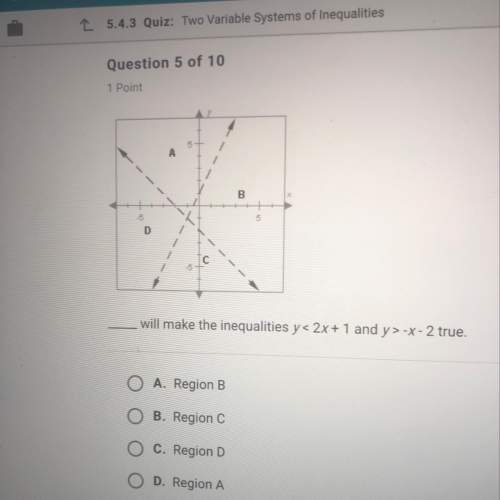
Mathematics, 03.07.2021 22:50 jadenbun
2.1 Let two sets be P={a, e, d, j, k} P={a, e, d, j, k} and Q = {k, l, m, e, n} Q = {k, l, m, e, n} and U= {a, c, d, e, j, k, 1, m, n} U = {a, c, d, e, j, k, l, m, n} then prove the De Morgan's law of union using P and Q. (5)

Answers: 2


Other questions on the subject: Mathematics

Mathematics, 20.06.2019 18:04, umezinwachukwuebuka1
Two number cubes are rolled- one blue and one yellow. part a) find the probability that the blue cube is less than 3 and the product is 8. part b) is this event independent or dependent? explain why. your
Answers: 3

Mathematics, 21.06.2019 18:00, BlueExorcistReaper
Solve 2^x=32 and rewrite this equation in a logarithmic form
Answers: 2

Mathematics, 21.06.2019 21:30, alexialoredo625
Plz hurry evaluate the expression a+b where a=8 and b=19
Answers: 1

Mathematics, 21.06.2019 22:10, goodygoodgirlygirl
Akitchen is 12 ft. by 14 ft. with 10 ft. high walls. how much would it cost to put vinyl flooring in this room? $8.80 per ft
Answers: 1
You know the right answer?
2.1 Let two sets be P={a, e, d, j, k} P={a, e, d, j, k} and Q = {k, l, m, e, n} Q = {k, l, m, e, n}...
Questions in other subjects:

Mathematics, 13.11.2019 03:31





Biology, 13.11.2019 03:31


History, 13.11.2019 03:31

Social Studies, 13.11.2019 03:31




